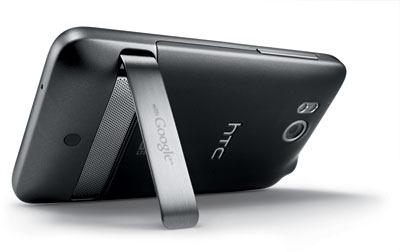
Since last year, Verizon has gone from 2 mobile broadband plans (excluding prepaid options) to offering two 4G plans plus bevy of 3G plans to fit any device you’ve got.
Here I’ll cover Verizon 3G plans for tablets (iPad included), mobile hotspots, netbooks, notebooks and smartphones (plus feature phones as Verizon calls it).
Verizon 3G Plans
Tablets, Mobile Hotspots, Netbooks & Notebooks

Similar to Verizon 4G plans for 4G devices, the 5 GB and 10 GB options are available for all 3G devices at $50 and $80 respectively.
If you’re an iPad and/or 3G tablet users currently using or considering AT&T, this might cause you to give Verizon your business:
While AT&T can compete with the lower tier 1 GB and 3 GB plans for $20 and $35 respectively in the iPad and 3G tablet market, power users simply can’t get 5 GB and 10 GB from AT&T. However, Verizon will happily provide them with service.
This naturally makes sense since the pricing on data grouped based on the device you use.
While laptops can naturally suck more data thanks to more intensive applications, there’s no reason why an iPad or 3G tablet which can either use the same or less data altogether shouldn’t have access to the same plan.
Smartphones & Mobile Hotspot Phone Plans
For the purposes of mobile broadband, smartphones now fall into 2 categories:
- Mobile Broadband Smartphones
- Smartphones that can share Mobile Broadband via WiFi
The line between mobile hotspots and smartphones is blurring:
Thanks to newer smartphones being able to broadcast as mobile hotspots much like the Sierra Overdrive or MiFi 2200, they can now act as complete replacements without the need for tethering (connecting to laptops via USB as a modem) to share their internet connection.
Once frowned upon and even disabled by many carriers, the advent of newer smartphones that make the process a simple extension of the phone, are ushering a new era of mobile broadband.
In much the same way cell phones are replacing many ‘home phones’ as their primary line of communication, mobile hotspots and increasingly smartphone mobile hotspots will now have the potential to replace DSL and cable connections as a primary internet connection.
– Mobile Broadband Buyer’s Guide 2.0

Verizon offers one $20 2GB-capped mobile broadband plan for smartphones as well as mobile hotspot smartphones.
Using your phone as your primary internet connection for all your devices might be possible with Sprint 4G unlimited mobile broadband plans.
However, doing so with the Verizon 2 GB hotspot option for your phone just isn’t going to work no matter how much you play with their cool data calculator.
With overage charges twice that of every other device, it serves as another indication of Verizon’s priority for network quality preservation.
On the other hand, it may simply mean they’d like you to purchase higher priced plans for multiple devices to access the very same network.
Next, Verizon 4G Speed Tests
Yes, the rumors are true.
Verizon 4G LTE is hands-down the fastest mobile broadband network available in the country. If not for 5 GB and 10 GB caps, it could easily replace your DSL or cable connection.
Next up, Verizon 4G LTE speed tests.
Also part of this 2011 review:


Deborah says:
It is these caps that keep me from getting any of these plans. And as far as Clear goes, I have been on forums where the folks are furious with the problems they have with Clear. Everything from terrible reception to problems with billing. I am getting the impression from all of my searching/learning that this is not all it’s chalked up to be. I hate my slow dialup, but at least it’s affordable. (no dsl or cable available here in the deep south boonies.)
Marc says:
Hi Deborah,
I currently use Clear/Sprint 4G. I intentionally signed up through Sprint (and I know this sounds strange) for the customer service. I’ve never had any issues with billing what so ever. On the other hand, I have had issues with reception but quickly solved the problem by placing my device by the window. However, I set my expectations according to my knowledge when I bought the device. I checked coverage for my area and knew that my apartment was at the exact edge of where they provided 4G coverage. While I only get 20-40% coverage according to my device, I consistently get the advertised speeds.
The important thing to remember is this: always do research, then test it out for a couple days. Don’t wait for months to go by in frustration. Also, many online commenters can also seem negative because the ones that aren’t having any problem just simply go about their day. People are more motivated to share when they have a problem rather than just stopping by to say “hey its working well”